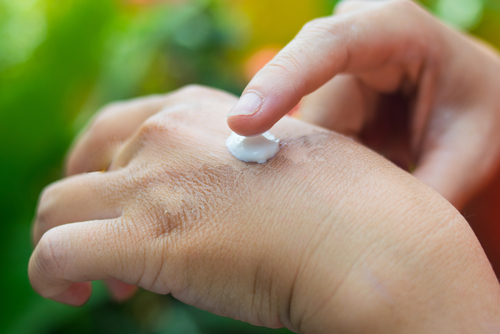Report Describes Successful Treatment Combo Against Itching in EB Pruriginosa
Written by |

The combination of the oral antidepressant mirtazapine with a topical gel containing ketamine and amitriptyline successfully treated excessive itching in a man with epidermolysis bullosa pruriginosa (EBP).
That case was described in the report “Epidermolysis Bullosa Pruriginosa successfully treated with concomitant topical and systemic agents,” published in the Australasian Journal of Dermatology.
EBP is a rare type of dystrophic epidermolysis bullosa characterized by pruritus, or severe itching of the skin. The disorder is caused by mutations in the COL7A1 gene.
The report describes the case of a 46-year-old man who had experienced intermittent pruritus and blistering since age 20. A physical examination revealed enlarged plaques and nodules in the legs, as well as dystrophic toenails.
Previous treatments, including a strong corticosteroid cream and oral antihistamines, were unable to provide meaningful benefits.
His father and two sisters experienced similar symptoms. Analysis of the patient’s tissues and cells showed liquid underneath the skin’s outer layer (epidermis) that contained immune cells. Also, he had reduced levels of anchoring fibrils, which are large structures that hold the skin together.
The family history combined with the patient’s symptoms and with laboratory tests ruling out the existence of an autoimmune disorder were consistent with the diagnosis of EBP, said the scientists from Centro Hospital e Universitário do Porto, in Portugal.
To control pruritus, he was first given a topical gel containing 0.5% ketamine and 2% amitriptyline, administered twice per day. Ketamine is an anesthetic and amitriptyline is an antidepressant. When used in combination, the medications could relieve itching by blocking the activity of nerves that detect sensations of itch, the investigators said.
After six weeks, the gel had substantially alleviated pruritus, but sleep problems due to this symptom persisted. As a result, the patient added 15 mg per day of mirtazapine to his treatment regimen. Notably, use of mirtazapine has been effective against prutitus associated with different causes.
Over six months, this treatment combination further reduced pruritus, markedly reduced blistering, and improved clinical appearance. Mirtazapine then was progressively reduced and ultimately stopped.
“Currently, our patient maintains the application of ketamine–amitriptyline gel topical once daily, with minor relapses,” the researchers wrote.
The only reported side effect was weight gain, which is commonly associated with mirtazapine, they said.
Overall, this case illustrates that the combination of local treatment with systemic treatment (mirtazapine) can effectively and safely control pruritus in a person with EBP.
“Further investigation is necessary to evaluate the effectiveness of topical ketamine–amitriptyline and systemic mirtazapine in highly pruriginous dermatoses [skin diseases] and to determine whether the therapeutic response depends on the aetiology [cause] of the pruritus,” the team concluded.





